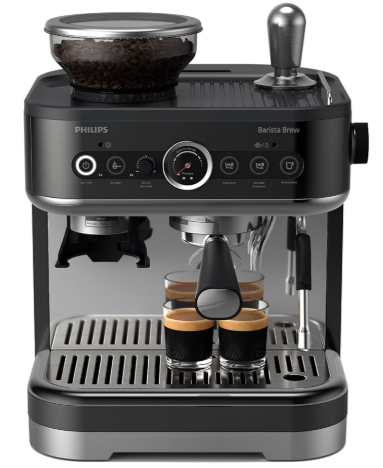Exploring the Microbial World of Coffee Fermentation
BLOG NEWS
10/7/20255 min read


The Science of Coffee Fermentation
Coffee fermentation is a crucial process in the production of high-quality coffee beans, as it involves various biochemical reactions that significantly influence the flavor and aroma profile of the final brew. During fermentation, an array of microbes, including bacteria and yeasts, interact with the coffee cherries. This interaction begins after the cherries are harvested and is primarily facilitated by the pulp's natural sugars, which serve as a substrate for microbial action.
As coffee cherries ferment, yeasts, particularly species of Saccharomyces, play a pivotal role in converting sugars into alcohol and carbon dioxide. This conversion not only assists in breaking down the mucilage surrounding the beans but also produces compounds such as esters and phenols, which contribute to the coffee's nuanced flavor characteristics. Concurrently, lactic acid bacteria ferment sugars into lactic acid, adding complexity to the coffee’s profile while also helping to lower the pH of the environment, which can inhibit the growth of undesirable microorganisms.
The environmental conditions during fermentation, particularly temperature and time, greatly influence the outcome of this process. Warmer temperatures can accelerate microbial activity, leading to a faster fermentation but potentially resulting in over-fermented flavors if not carefully monitored. Extensions in fermentation time can also yield richer, more complex taste profiles, but it is imperative to find the right balance to avoid sour or off-flavors. Ideally, conditions should be optimized to maintain microbial diversity, enabling a broader range of flavor compounds to develop.
Understanding the science of coffee fermentation allows producers to harness the power of microbes, effectively curating unique coffee experiences. By controlling fermentation parameters, including time and temperature, coffee producers are able to showcase the inherent qualities of the beans, ultimately elevating the sensory experience for consumers.
Key Microorganisms in Coffee Fermentation
Coffee fermentation is a complex biochemical process influenced heavily by various microorganisms, primarily yeasts and bacteria. These microorganisms play a vital role in shaping the flavor and aroma of the final coffee product. Primarily, the fermentation process begins with the action of yeasts, predominantly from the Saccharomyces genus. These yeasts are responsible for converting sugars present in the coffee cherry into alcohol and carbon dioxide, leading to the production of various volatile compounds that contribute to the sensory attributes of the coffee.
In addition to yeasts, lactic acid bacteria (LAB), particularly from the Lactobacillus and Leuconostoc genera, also play a significant role in coffee fermentation. These bacteria further metabolize sugars and produce lactic acid, which not only helps lower the pH but also adds a distinctive tartness to the coffee flavor profile. The presence of LAB can enhance the complexity of the coffee by imparting subtle flavors that are not achievable solely through yeast fermentation.
Different regions utilize unique microbial communities, reflecting their local environmental conditions and traditional processing methods. For instance, in many African coffee-producing countries, a diverse array of wild yeast species may be present, and these can lead to a more pronounced fruitiness and floral notes in the coffee. In contrast, Central American regions often rely on more controlled fermentation processes that focus on specific yeast strains to achieve consistent results.
Understanding the interplay between dominant and wild microorganisms offers valuable insights into how coffee flavors are developed. The microbial diversity present during fermentation is key to enhancing the complexity of the coffee, creating a rich tapestry of flavors that connects the consumer to the region of origin. Consequently, fostering the right microbial environment during fermentation can be pivotal for coffee producers aiming to differentiate their offerings in a competitive market.
Impact of Fermentation on Coffee Flavor Profiles
Fermentation is a crucial step in coffee processing that significantly influences the flavor profiles of coffee beans. The process involves the breakdown of sugars and organic compounds by microorganisms, resulting in a variety of taste experiences that can range from fruity and floral to earthy and savory. Different fermentation methods such as natural, washed, and honey processing lead to unique flavor attributes that are highly regarded in the coffee industry.
In natural fermentation, coffee cherries are dried with the fruit still intact, allowing natural sugars to interact with the beans. This method tends to produce a coffee that is fuller-bodied, with heightened sweetness and pronounced fruity flavors, often reminiscent of berries or wine. In contrast, washed fermentation involves removing the fruit from the beans before fermentation. This process tends to produce a cleaner taste profile, accentuating acidity and allowing the inherent flavors of the coffee varietal to shine through. As a result, coffee produced through washed processing is typically characterized by bright, crisp acidity and clarity in flavor.
Honey processing is a hybrid method that lies between natural and washed methods. In this process, some of the fruit mucilage is left on the beans during drying, which adds a balance of sweetness and acidity. The outcome often features a complexity that can include floral notes alongside a creamy mouthfeel. The fermentation method used can dramatically affect not just the flavor intensity but also the coffee's marketability, as consumer preferences evolve towards more distinct and memorable tastes.
Furthermore, factors such as fermentation duration, temperature, and microbe activity play critical roles in determining the final flavor profile of the coffee. Ultimately, the intricate relationship between fermentation and flavor contributes profoundly to the coffee's overall appeal, shaping both its character and its desirability in an increasingly competitive market.
Innovations and Future Trends in Coffee Fermentation
Recent advancements in coffee fermentation have significantly transformed the methods utilized in coffee production, emphasizing controlled fermentation environments and targeted microbial strains to enhance flavor profiles. Producers are increasingly implementing sophisticated fermentation techniques, which allow for a greater degree of influence over the final taste of the coffee. These innovations are not only setting new standards for quality but also expanding the exploratory boundaries of flavor experiences in coffee.
The use of specific microbial strains, including various bacteria and yeasts, is becoming more prevalent. These microorganisms can induce particular fermentation processes that yield distinctive flavor notes, setting a new precedent for specialty coffees. Coffee producers are now venturing into experimental fermentation, where innovations such as anaerobic and carbonic maceration are resulting in unique sensory attributes. Such experimental approaches have gained traction among both coffee growers and consumers, as they cultivate interest in diverse flavor characteristics and profiles, thus reshaping consumer preferences.
Sustainability is another vital aspect of future trends in coffee fermentation. Environmental concerns are driving coffee producers to adopt practices that minimize waste and reduce energy consumption. The integration of sustainable fermentation techniques is essential in aligning with ethical sourcing and enhancing the overall carbon footprint of coffee production. Innovations such as closed-loop systems and the use of by-products from fermentation processes underscore how industry practices are adapting in response to ecological concerns.
In summary, as the coffee industry continues to evolve, innovations in fermentation practices are poised to significantly impact coffee quality and sustainability. The rise of controlled fermentation environments and the strategic application of specific microbial strains represent key trends that will likely influence future coffee production, elevating both the artistry and science of this beloved beverage. With ongoing research and experimentation, the future of coffee fermentation appears promising, fostering a richer and more diverse coffee culture.
One of our favorite coffee makers....
PHILIPS Barista Brew Semi Automatic Espresso Machine


About this item
Brew like a barista: The Philips Barista Brew Espresso Machine empowers coffee enthusiasts to create barista-quality brews with tools like the 58mm portafilter and single & dual walled filter baskets.
Integrated guidance: Enjoy intuitive guidance for crafting every cup, ensuring a rich aroma and satisfying espresso experience with the premium calibrated tamper & countertop-safe tamping system.
Elevate your coffee experience: Enjoy a 250g bean container that ensures freshness of your beans.
Upgrade your milk frothing experience: Elevate your milk frothing experience effortlessly with the 450ml stainless steel milk jug and powerful steam wand.
Choose your ideal brew: experience convenience with the Americano button and integrated hot water outlet, or choose a single or double espresso.
Click 'Shop Now' to find on Amazon...
Why the PHILIPS Barista Brew Semi-Automatic Espresso Machine one of our favorites...
The PHILIPS Barista Brew Semi Automatic Espresso Machine is more than just a coffee maker—it's a daily dose of barista-level bliss in our own kitchen. It’s quickly become one of our favorite machines, and here's why.
First, let’s talk about consistency. This machine delivers rich, velvety espresso shots with the perfect crema—every single time. Whether you're pulling a single or a double, the semi-automatic design gives you control without being overly complicated, making it ideal for both beginners and seasoned home baristas.
The built-in steam wand is another major win. It creates creamy, café-quality microfoam for lattes, cappuccinos, and flat whites. It heats up quickly and gives you just the right amount of power to texture milk exactly how you like it.
